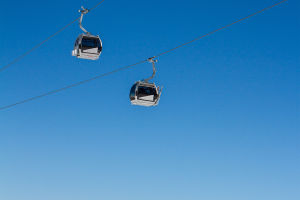Speedboats, a quintessential representation of water sports and entertainment, have always captivated enthusiasts with their exhilarating speed.
Modern technological advancements have continuously pushed the boundaries of what speedboats can achieve.
From everyday leisure boats to competitive racing machines and world record-breaking vessels, speedboats exhibit an impressive range of speeds.
This article delves into the fascinating world of speedboats, examining how fast these top-tier vessels can go and what factors contribute to their incredible performance.
Types and Speeds of Speedboats
1. Leisure Speedboats
Leisure speedboats are typically designed for family outings, fishing trips, and casual excursions. These boats prioritize comfort and ease of use over speed. However, even recreational speedboats can achieve impressive velocities with advancements in marine engineering.
High-performance leisure speedboats can reach speeds of 50 to 70 kilometers per hour (31 to 43 miles per hour). This range is sufficient for most users, offering a thrilling experience while maintaining safety.
2. Racing Speedboats
Racing speedboats are engineered for competitive events, emphasizing lightweight construction and powerful engines to achieve maximum speed and precise handling. These boats can easily reach speeds between 100 to 150 kilometers per hour (62 to 93 miles per hour).
For instance, the F1 Powerboat can accelerate rapidly to extraordinary speeds, showcasing the synergy between advanced mechanical design and human skill. These boats are a testament to the cutting-edge technology and engineering prowess invested in competitive speedboating.
3. Top Racing Speedboats
The pinnacle of speedboat engineering is found in top racing speedboats, designed specifically to break world records. Currently, the fastest speedboat in the world is the "Spirit of Australia," driven by Australian Ken Warby.
This boat set the water speed record at an astonishing 511 kilometers per hour (317 miles per hour) in 1978, a record that remains unbroken. The key to this remarkable achievement lies in its powerful jet engine and highly optimized design, which minimize drag and maximize thrust.
Factors Affecting the Speed of Speedboats
Several critical factors influence the speed capabilities of speedboats, particularly those aiming for top speeds.
1. Power System
The power system is at the heart of a speedboat's performance. Top speedboats are typically equipped with high-power engines, including both internal combustion and jet engines. Jet engines are favored in ultra-high-speed boats for their ability to generate substantial thrust.
Additionally, there is growing interest in hybrid power systems, combining traditional and electric propulsion to enhance performance while addressing environmental concerns. These systems aim to balance the quest for speed with a commitment to sustainability.
2. Hull Design
The hull design plays a crucial role in determining a speedboat's speed. Top speedboats feature streamlined hulls to minimize water resistance and enhance hydrodynamics.
The choice of materials is equally important; lightweight and high-strength materials such as carbon fiber and Kevlar significantly reduce the hull's weight, thereby increasing speed.
Innovative design elements, including hydrofoils and stepped hulls, are also used to lift the boat out of the water at high speeds, further reducing drag.
3. Water Surface Conditions
The condition of the water surface is another vital factor in achieving top speeds. Smooth, calm waters provide the best conditions for speed trials, allowing the boat to glide with minimal resistance.
Conversely, waves, currents, and wind can adversely impact a boat's performance, reducing its top achievable speed. Therefore, speed tests for record attempts are typically conducted in controlled environments with ideal water conditions to ensure the best possible performance.
Conclusion
The speed of top speedboats is a testament to human ingenuity and the relentless pursuit of breaking barriers. From leisure speedboats designed for casual enjoyment to racing machines built for competition and record-breaking attempts, speedboats showcase a remarkable range of capabilities.
Looking ahead, advancements in technology promise even greater speeds and more sustainable solutions, ensuring that the thrill of speedboating continues to captivate and inspire.


